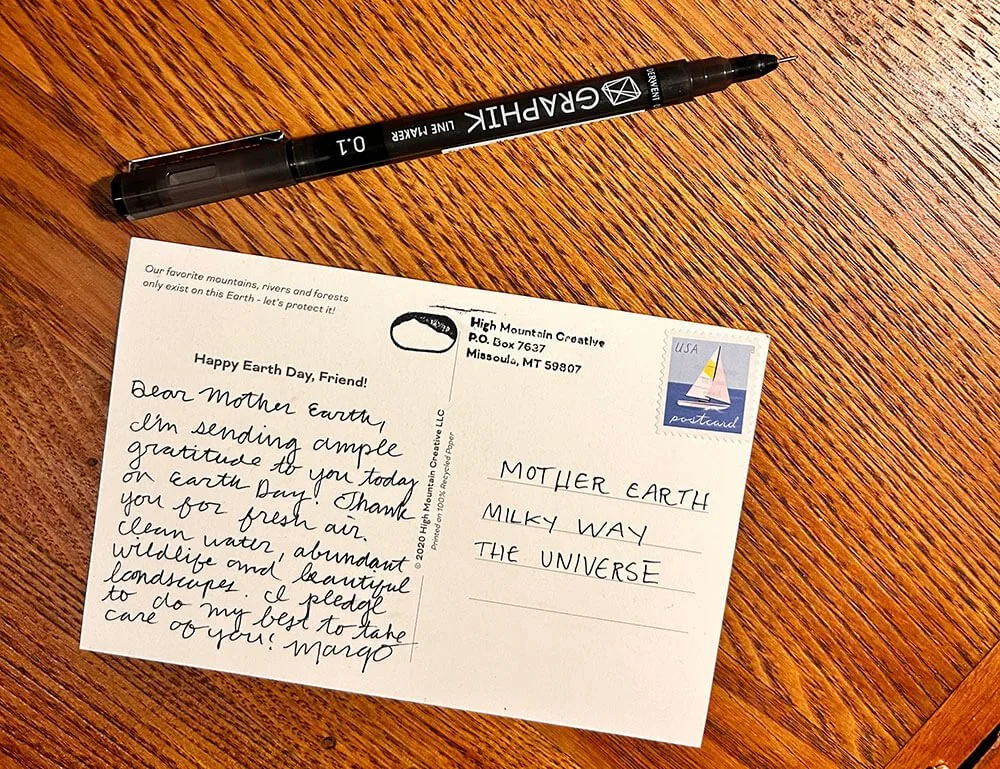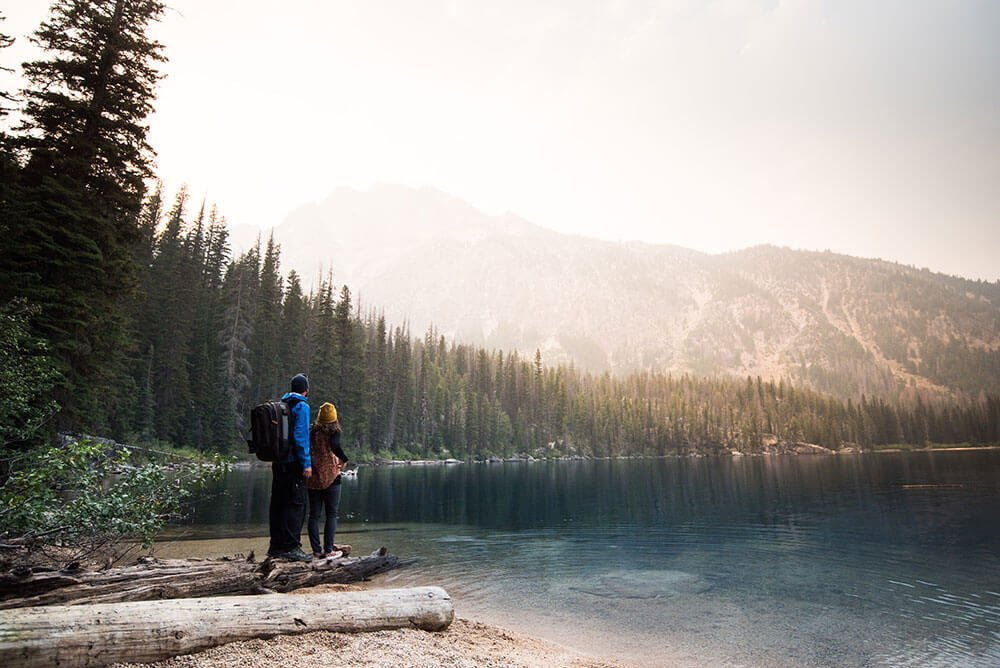Find New Joy in Celebrating Earth Day
7 Tips for Making Long-Lasting Memories and Impact on Earth Day
Each year around this time, I put together some ideas for honoring Earth Day. I went back and looked at my lists from the past few years and knew I wanted this year’s list to be more meaningful and inspirational to help readers make Earth Day memories that lived on long after April, Earth Month, was over. On this list are ideas of varying difficulty, financial & time commitment and creativity so that everyone can find something that feels do-able and enjoyable. I hope you find one that speaks to you!
Photo: Diane Helentjaris on Unsplash
1. Visit your local library for plant & animal ID books
Time commitment: Medium
Financial commitment: Low
Creativity: Low
This could be a whole day worth of fun because it includes a two-part adventure with a trip to the library and a nature walk! If you’re out and about with kids, the Backpack Explorer Series has a collection of books to help ID and learn about birds, bugs, trees and more. Older kids and adults can look for books like Sibley or Audubon guides to birds or trees or ask a librarian if there are any region-specific ID books so you can focus specifically on the flora and fauna in your area. Once you’ve found the perfect book, grab your picnic basket, binoculars and camera and head out into the field for a fun afternoon of exploring and identifying all of Mother Nature’s beauty! Your newfound knowledge and curiosity will give you a priceless, long-lasting connection to nature and appreciation for our Earth.
2. Plant some sunflower seeds and watch them grow
Time commitment: Medium
Financial commitment: Low
Creativity: Medium
For an avid gardener, this might not sound exciting but to an average not-so-green thumb person like myself, the thought of planting a seed in a paper cup and watching it grow into something tall and bright that can live in my front yard makes me smile. Anyone with access to a window sill, some soil and a pack of sunflower seeds can do this. If you don’t have a yard to transplant your sunflower buddy to, ask a friend, neighbor or local school if you can plant it in their yard. Everytime you see your sunflower, you can think of Earth Day and feel gratitude for the place we live.
3. Write a letter to the Earth
Time commitment: Low
Financial commitment: Low
Creativity: High
This can be a thank you letter, apology letter, a poem of gratitude or a picture of your favorite things on Earth. Write it on a postcard, stationary, notebook paper or a bar napkin. The important thing is taking a few minutes out of your day to reflect on your relationship with the planet and finding a way to express it. I was hoping to report back with a mailing address where you could actually send a letter to the Earth (like kids can write to Santa during Christmas and USPS receives and responds to the letters) but I’m yet to find that resource. In the meantime, file the letter away and make it a tradition to read it next year when you write another one.
4. Make an Earth Day Resolution
Time commitment: Medium
Financial commitment: Depends on your resolution
Creativity: Medium
Like a New Years Resolution but for the Earth! What if once a year, instead of making a resolution to better ourselves, we made a resolution to better the planet? Oddly enough, a lot of things that are better for the planet are also better for our bodies! Like reducing our use of plastics (proven to include chemicals dangerous to our health), eating more local or organic food or riding a bike or walking instead of driving. Making a small, obtainable resolution can be a fun, challenging way to carry your Earth Day celebration through the entire year (and beyond!).
5. Take the 8-hours Outside Challenge
Time commitment: High
Financial commitment: Low
Creativity: Medium, could take some creative planning!
Just like our own mothers on their birthday, they just want to spend time with you. Make a plan to just kick back and spend some time with Mother Earth this Earth Day. This could be something like going for a long hike, followed by a backyard BBQ and a doggie fetch-session or taking a blanket and a picnic to the local park and sitting under a tree with a good book, sketch pad or friend. Set your own goals for how long you want to spend outside based on your schedule, location and local weather.
6. Subscribe to Community Shared Agriculture (CSA)
Time commitment: Medium
Financial commitment: Medium/High
Creativity: Low
Often called a “farm share” or CSA box. Get fresh (and often organic) fruits and veggies on a weekly schedule from local farmers and producers. The pricing is typically subscription-based (pay a fixed-rate every week) or a flat fee for the whole season. Most farm share pricing is reasonable and can be compared to the cost of a weekly haul of organic veggies from the supermarket, not to mention that the money goes directly to the farmers and stays in your community. Check out this directory on Local Harvest to find participating farms and food hubs near you.
7. Start a compost bin for food scraps.
Time commitment: High
Financial commitment: Medium
Creativity: Medium
A lot of organic food waste and scraps – like coffee grounds, banana peels and eggshells – end up trapped in a plastic trash bag and sent to the landfill with the rest of our garbage. By doing this, we’re depriving worms of the joy of eating these delicious composable snacks and recycling (pooping) it into nutrient-rich soil that can be used for gardens or houseplants. On top of that, composting helps reduce the amount of waste that goes to the landfill which in turn reduces the impact landfills can have on the environment like methane emissions. Composting isn’t accessible to everyone for a variety of reasons like living situations, space restrictions, time and wildlife conflicts (bears also like garbage), but if you’re curious about compost and have a little extra space in your backyard, consider starting a compost bin. I use an old, cracked Rubbermaid trash can and plopped it into the corner of my yard. In the summer, I throw organic food waste, weeds and grass clippings into my compost bin and stir it up. I use the soil it produces in my small garden buckets of veggies and herbs.
This article from NRDC does an excellent job explaining the benefits of composting and some basic rules of thumb: Composting 101
Inspired? Check out this easy DIY compost bin idea: Make a DIY Compost Bin for $10
Earth Day is an important day of the year, normalizing celebrations large and small helps us all remember how important it is to take care of our home planet. I look forward to hearing what your Earth Day celebration looks like!
I’m Margo! A graphic designer who works with environmental nonprofits and mission-driven brands on projects like logos & branding, annual reports, maps, and infographics. I work with my clients to create beautiful and meaningful design that amplifies the marketing efforts it takes to ignite action and change. Visit my portfolio to see some of the projects I’ve collaborated on with nonprofits to protect the environment.





